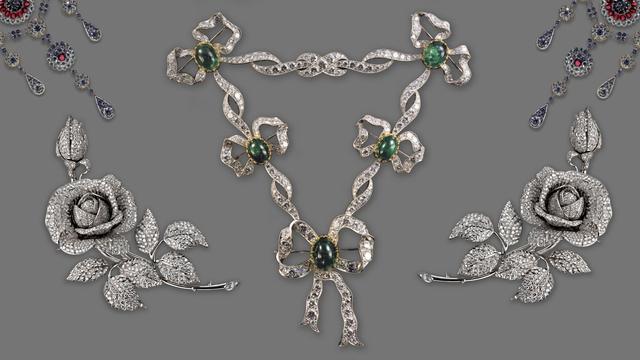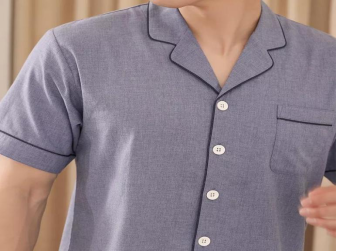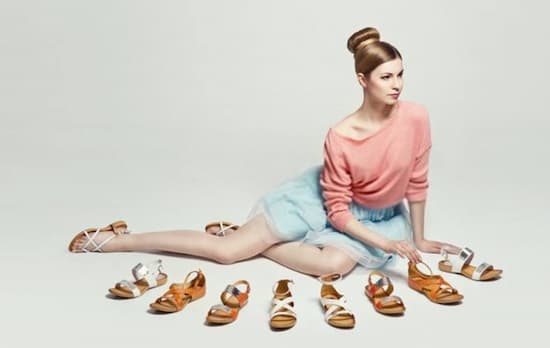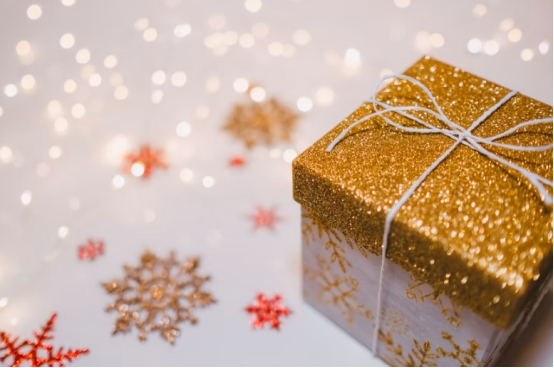Masterpieces of Soviet jewelry kept in the Kremlin
It's easy to imagine these luxurious emerald collars and diamond tiaras at a high-society event, but they were never really used. They were manufactured in Soviet times especially for an exhibition of the Diamond Fund where lost historical jewels were recreated.
The Diamond Fund
Shakko/WikipediaDuring World War I, Romanov treasures stored in the Diamond Room of the Winter Palace were transferred to the Kremlin Armory in Moscow for custody. However, after the Revolution of 1917, the valuable imperial jewels ended up in the hands of the Bolsheviks. In the following years, the country's new leaders organized large sales in foreign auctions and kept only the most unusual gems and jewels.
Romanov treasures prepared for sale.
Archivo Estatal de Documentos Cinematográficos y Fotográficos, KrasnogorskIn 1967, the Kremlin opened an exhibition of gems and works of artistic jewelry to commemorate the 50th anniversary of the Soviet government. Initially, it was supposed to last a year, but it turned out to be so popular that it became a permanent exhibition. In the 1970s, Diamond Fund jewelers decided to recreate the Diamond Hall jewels from old catalogues. His creations are still exposed today.
Diadema of the Russian Field
Diadema of the Soviet Russian Camp and diadem of the Romanov "wheat gavel".
Yuri Somov/Sputnik; Dominio públicoRussian Field is a replica of the "wheat gavilla", one of the most famous diadems of the Romanov. The original belonged to Empress Maria Fiodorovna (1759-1828), wife of Paul I, and was made by the Duval brothers at the beginning of the 19th century. It consists of golden "linen ears" decorated with diamonds and a set of Leuco sapphire (a colourless sapphire symbolizing the sun) in the center. It was sold at an auction, but nothing else is known about its fate.
The Soviet diadem was made in 1980 in honor of the "development of virgin lands". The yellow ears are made of gold and the stems of white linen are platinum and are decorated with 1,837 diamonds of different sizes. In the middle of the tiara is a yellow 32.52 carat diamond.
Tiara of Russian beauty

Russian beauty tiara and pearl tiara.
Serguéi Pyatakov/Sputnik; Dominio públicoAnother famous piece was the recreation of a diadem of lost pearls that belonged to Alexandra Fiodorovna (1798-1860), wife of Nicholas I. the original 1841 diadem, work by Carl Bolin, was resold several times and is most likely now found in the Philippines. In 1987, Soviet jewelers managed to make a fairly faithful copy of this masterpiece. The diadem is decorated with 928 diamonds and 25 large pearls. Unlike the original, the pearls of recreation are artificially cultivated, and instead of silver the jewelers used platinum.
A small business attorney can't only handle any lawsuit and litigation issues, your business attorney can negotiate... Http: / / t.co / 3mj0kPYMZA
— Chris Payne Mon Aug 26 16:59:46 +0000 2019
Plaster collar
The Soviet necklace and the original necklace
Gokhran; Dominio públicoThe plastron is a type of huge necklace that covers not only the neck, but also the chest. This decoration is an exact reproduction of an ancient plaster made by Carl Faberge in the middle of the 19th century. It consists of five moving arches, each containing an emerald of the Urals cut into chabujón.
Floral fantasy brooch
This type of brooch was used in Tsarist times to decorate dresses, and they used to be sectional. This exact brooch was never really in the Romanov chest, but is an original creation made by Soviet jewelers in 1991 from images of several ancient jewels. Floral fantasy consists of five moving parts and can be transformed into a necklace, small pins and pendants. With a weight of almost 400 grams, the jewel is made of platinum, gold, 1,135 diamonds, 68 rubies and 15 pearls.
Pink brooch
Soviet-made brooch and a photo of the old brooch.
Serguéi Pyatakov/Sputnik; Dominio públicoThe last Empress, Alexandra Fiodorovna (1887-1918), had a rose-shaped brooch that is only preserved in ancient photos. But the Soviet jewelers did not limit themselves to making a copy of this article. The natural size rose is made of platinum and fixed on docks, so the flower seems to swing like a real one. The brooch is decorated with almost 1,500 diamonds and was made in 1970 on the occasion of Vladimir Lenin's centenary.
Necklace and wristband of docks
The Spring ensemble was created in 1977 based on old Russian jewelry. The necklace and bracelet are platinum and gold with Yakut diamonds and Ural emeralds.
Bouquet brooch
Pequeño y precioso ramo, fabricado en 1968, este artículo se asemeja a las joyas del siglo XVII con motivos florales populares. The Diamond Fund ha conservado varios broches antiguos similares. En el pasado, los maestros ponían láminas bajo las piedras para “colorear” los diamantes. El broche soviético está hecho de diamantes y esmeraldas.
Jubilee collar
This piece of platinum and gold was made in 1981 to commemorate the 35th anniversary of Soviet victory in World War II. It has 512 diamonds and 31 rubies.
Read more: 10 masterpieces of jewelry by the Moscow State history Museum
The copyright law of the Russian Federation strictly prohibits copying all or part of Russia beyond materials without prior written permission and without including the link to the original text.







